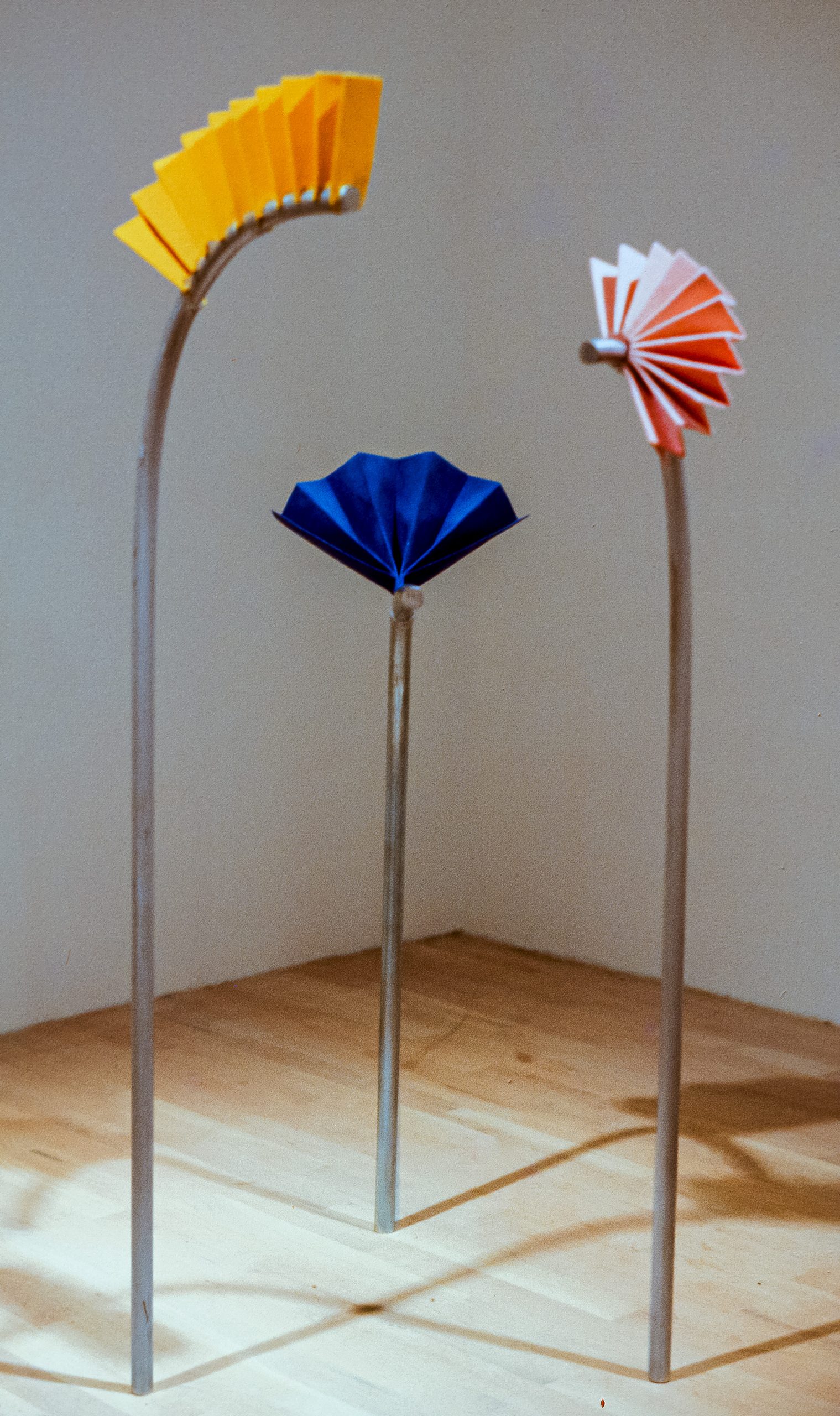
As an undergraduate at The University of Michigan I learned drawing from the figure, and in my junior year at Cranbrook Academy I studied anatomy. Further study at The Kokoschka School of Vision in Salzburg, Austria was spent modeling the figure in clay under the direction of Emilio Greco. Even as my knowledge of the figure expanded, I was trying to abstract it. Some small self-portraits (all destroyed) were made with human hair and false eyelashes. I moved to New York in late 1962, sitting in on night drawing classes at Columbia University with Peter Agostini. The figure, or parts of it, continued to play a fundamental role in my work. In 1962–63 I constructed a seven-foot high plaster and chicken wire phallic forest, some small, cheerfully painted, literal representations of the penis, a set of soft suede priapi and a few sculptures in cement. I made just one life-sized, gold-painted plaster vagina; my boyfriend kept his spare change in its folds(!). The “forest” was destroyed by junkies in the basement of the building where they had been stored. The building had a pharmacy on the ground floor and as they tried to gain access to it they lashed out and gratuitously smashed the work: I suppose it was a successful artistic statement. The smaller, realistic works have disappeared.
The seventies was a time of experimentation, both politically and in my sculpture. I moved from idea to idea, exploring numerous materials, seeking the ones that would best serve as a vehicle for a particular theme. I used rubber, wood, silicone, paste jewels, plaster, hydrocal, kapok, aluminum, flocking and metal flake paint. I sought non-western sources for inspiration, specifically Chinese and Japanese decorative symbols, seeking benevolent, celebratory imagery and themes that would replace the male-defined ones on which I had been weaned.
“…[Zucker’s] plumbing pipes and electrical conduit centered Minimalism’s reduction and industrial materials – to which they obviously had a kinship – by virtue of her styling them in daring automobile gloss colors (purple, aqua blue, Cadillac coral) during an a-coloristic, naturalist period, and further dressing them to strut, if not to kill, in sheet-metal ruffles. Mated were male and female, high and low cultural reference, “good” taste and “bad”, plus boudoir, body shop and ballroom integrated as one streamlined glittering abstract gesture.”
Joan Simon, The Sculpture of Barbara Zucker (catalog, Barbara Zucker, 1993)
